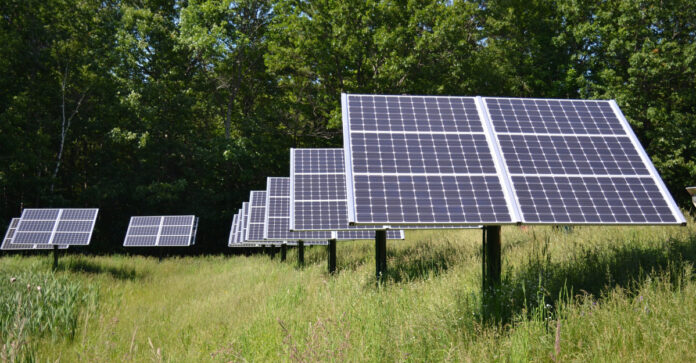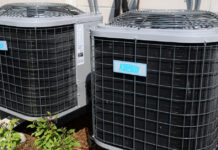Our Solar Power Journey – Part 2
In Part One, we looked at our electrical demand and made some tough decisions about what we would power and what would probably not be powered using our future solar system. We quickly realized that we will NOT be powering the entire house due to the high electrical draw of our electric stove top, oven, heat pump dryer, and hot water heater.
In this continuation, we are going to look at the different types of solar systems and battery types available and do some more planning for an eventual installation. For those of you following along, at the end of this article, you should have a greater understanding of the available solar options and be in a position to make some decisions.
Let me make it very clear that I am a layman. I am not an electrician, an engineer, or a solar power expert. So do your own research, consult experts as necessary, and make your own decisions based on your individual situation.
Components of a Solar System
Traditional solar power systems are made up of three primary components: The solar panels that generate the power, the batteries that store it for later use, and the inverter that turns the DC power stored in the batteries into the AC power used by your lights and appliances.
Inverters have come a long way and today’s units do many things, including: Charger your batteries, replacing the need for a separate battery charger; take AC power from the grid or a generator and use it to recharge your system and power your house; send excess power back to the grid, earning your credit against your bill (and, in effect, running your meter backwards); allow you to manage the health of your system and control and balance the other components. We consider the inverter to be the heart of the system as well as its brain. Inverters will be covered in greater detail in Part Three.
The good news about most solar systems is that they are modular, meaning you can plug new components into them as your needs change or your budget allows. So you might be able to start with four or eight solar panels and then add eight more in the future when you have the cash While inverters are sized to a particular load, you can usually chain them together, increasing system capacity and throughput.
Types of Solar Systems
Solar power installations are defined as follows:
Off-grid system. These systems are stand-alone solar-powered systems that do not use any grid-supplied power. They are most appropriate when you build or retrofit a retreat far from existing electric lines (Utilities charge to install new lines, and it is quite expensive.) They rely on solar power, but like most systems can also incorporate wind or hydro power. Most use a generator to provide extra charging when there has not been enough sun or you need an extra surge of electrical power to run a power tool or other high-draw device.
In my opinion, these systems only make sense when you can design your house to use as little electricity as possible. For example, you could make extensive use of propane, including a propane-powered refrigerator. You could even wire your home with 12-volt wiring in addition to 120, allowing you to use lights and electronic devices designed for RVers and boats.
In my case, since we have an on-grid home, an off-grid system is out of the picture. Our remaining options are:
A grid-tied system, which provides AC power to the house when the sun shines and sells electricity back to the utility if you generate more power than you can use. Because these systems do not include batteries for storage, they are not appropriate for the needs of a prepper.
A grid-tied system is what many companies are offering today because local utilities want to increase the amount of renewable power they use. They pitch it to the homeowner as a way to get “free” electricity. It would not surprise me if their estimates in how long it takes for you to “pay off” the system are off, and not in your favor.
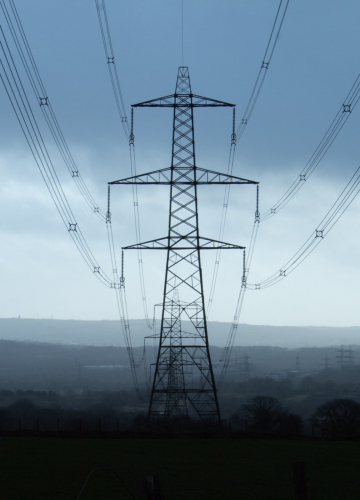
Since you are not investing in batteries, a grid-tied system is the least expensive type of solar system, but it fails to address our needs in a grid-down situation.
A grid Interactive system combines a grid-tied system with the storage cells of an off-grid system. Sometimes known as a hybrid system, this gives you full access to the grid power plus battery backup for outages for a grid-down situation. This appears to be our best choice, even though the cost of batteries make it expensive. Maybe there will be a bidding war for our current home so we can afford to spend more, but I’m not holding my breath.
Like the grid tied systems, the inverter in a hybrid system will shunt some or all of the power generated by your system to your home to meet your electrical demand. Any excess power will then be sent to your batteries for storage. When the batteries are full, any excess power from the solar panels is sent back to the grid.
A small portable solar power system built around something like the Titan solar generator or its competitors such as the Goal Zero from Yeti is our final option. These allow you to plug in a few appliances, recharge your USB devices, and are portable enough to be lugged around and transported in your car. They are designed to be charged from the wall and then, when AC power is not available, can be plugged into solar panels.
I seriously considered this option, but opted against it for several reasons, including cost per kilowatt. I can see using this option in a small cabin or as aback up during a brief outage, but it is too small for us to use full-time.
These systems are an excellent way to get introduced to solar power and many offer modular batteries that can be stacked or chained together to increase the system storage capacity. One downside, however, is that they usually do not integrate into your home’s electrical system. They include a bank of 110 outlets and USB ports, and you have to plug things in or run extension cords.
Our Choice: I can say with a high degree of confidence that we are going to go with the grid interactive system. This will hopefully allow us to offset some of the costs of our system by reducing our electric bill via selling electricity back to the power company.
Picking the Best Battery
I have looked at four types of batteries including:
Lead acid flooded batteries. These batteries are the kind you have to top off with water from time to time and they release hydrogen, which is explosive, when you charge them, so they must be vented. They are a common choice for solar power installations because they are the least expensive battery type. They are also a proven technology with a track record of more than a century and are probably the industry standard.
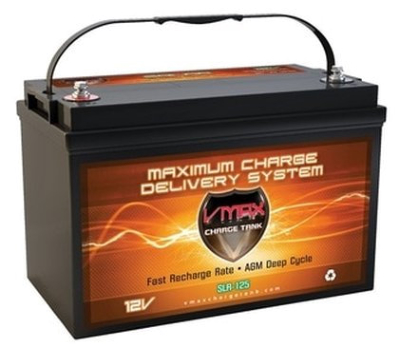
are more expensive than the traditional flooded lead acid batteries. They are more expensive, but better for unattended use. If you are putting solar power in an off-grid retreat that you may visit only three or four times a a year, go with these batteries.
Glass Mat (or AGM) lead acid batteries. These need far less maintenance but
Nickel Iron Battery. Invented by Thomas Edison, these also have a long track record. They are the longest lasting battery out there, easily lasting 30 years. They also allow you to draw down up to 80 percent of their capacity, another advantage over traditional lead acid batteries which you want to keep charged at at least 50 percent. The downside is that because one cell is only 1.2 volts , you need to combine 10 cells to get a 12-volt battery. As a result, they tend to be even larger and heavier than lead acid batteries. These are also a flooded battery that need watering every month or two and emit hydrogen when charging, requiring venting.
Lithium batteries. While lithium batteries have a higher up-front cost than the competition, they have a longer operating life. Depending on the lithium cells used and their particular chemistry, many are good for 5,000 or 6,000 charge/discharge cycles. That’s up to 16 years, assuming there is a cycle every dayy.
Lithium batteries can be discharged all the way down to zero. In the short run, lithium batteries will give you twice as much power as the same capacity lead acid battery. In the long run – meaning 10 or more years – they work out to be more cost effective because they offer more power and don’t need to be replaced as often.
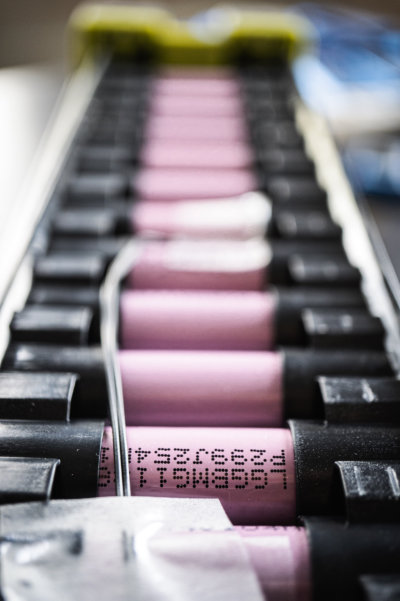
Battery Draw Downs
Different battery chemistries have different set points at which you must recharge the battery or risk damage to the battery bank.
If you have a batter bank of a lead acid batteries that is rated at 500 amp hours, you would need to recharge it before you use 250 amp hours. If you draw it down further, you could cause damage and shorten the life of your batteries, which are often the most expensive part of a solar power system. In fact, your batteries will last the longest if you only draw 100 or so amp hours between charges.
If you use nickel iron batteries, you will be able to draw down 400 amp hours, or 60 percent more than the lead acid batteries.
With a bank of lithium batteries, you could draw down 450 to 500 amp hours without damaging them, or double that of the lead acid batteries.
Our Battery Choice
Like much in life, the battery chemistry you select for your battery bank depends not only on your wallet, but on how you want to use spend it.
Our choice is the lithium battery, which we are probably going to get on the hobbyist or DIY market to save money.
Solar Panels
Solar panels also come in different technologies and types. We’ve decided on rigid monocrystalline panels for efficiency and durability. While flexible panels are more easily transportable, they are also more fragile and this is going to be a static installation that will benefit from the rigid panels being stronger and more durable.
Of course, size is an issue. We were initially looking at 100-wtat panels, but we realized 300-watt and higher panels are more cost effective per watt. If I was using one of the smaller, portable solar-power systems then the 100 watt option might be the way to go, but for a large, permanent installation on a roof or rack, it looks like the rigid are the optimal set up.
Over the past decade, the cost of solar panels has dropped remarkably and availability has increased. Do-it-yourselfers can buy 300-watt panels from Lowes and Home Depot. No longer do you have to be at the beck and call of a solar retailer or search Amazon or eBay that may be from dubious overseas sources. But shop around and try to get the best buy per watt.
If we start with a 4-pack of 300-watt solar panels, we will produce 1,200 watts per hour of full sunlight, but less in the morning, in the evening, when it is cloudy, if shade is cast on the panel, and when the sun is not at a full 90 degree angle. In addition, the shorter days of winter produce less and the longer days of summer produce more, but we want to plan for a worst-case scenario. So let’s assume that the 1.2 Kw panel set up provides only 5 kW of energy per day. If we double the number of panels, we can count on 10 kW per day. That sounds like a pretty good number to start with.
Given only 10 kW to work with for a 24-hour period, you see why baking something in an oven for 2 hours (about 5 kW) or running a load through the dryer (about 3kW) can eat up so much of your electricity. But running the refrigerator at 1,000 watts, or 1 kW, isn’t that bad.
Panels to Batteries
If we assume that we produce at least 10 kW a day, how much should we store? After all we cannot assume it will be sunny every day. We will have rain, snow and days of clouds where we could produce little or no power.
I want to have a battery system that will store at least three day’s worth of power, or a minimum of 30,000 watts. If you are using a 12-volt battery set up, that’s 2500 amp hour of storage. If you are using a 24-volt battery bank, then that’s 1250 amp hours. And if you are using lead acid batteries, you need twice as many batteries since you should only draw them down 50 percent.
Power Loss
It’s important to keep in mind that solar systems have some inherent loss. Every time your inverter converts DC power from the panels or battery bank to AC for the house, you will experience some loss, usually in the low single digits, but maybe up to 10 or 15 percent for a cheap plug-in inverter. Just sitting there doing nothing, most inverters will consume a few watts of power while they are in standby mode. Because of loss, shade and weather, I recommend that you round down whenever you are calculating numbers to size a solar power system. It is far better to find out after installation that you have more power than you expected than less.
While we are talking about power loss from your solar system components, let me remind you that some of the devices in your home steal power, even when they are off. You TV and cable or satelite box(es) use a few watts of power even when they are not running. Each of those square power blocks that you use to recharge your phone, power Alexa, and run a host of other devices are consuming a trickle of electricity, even when the devices are not on. Your security system, cameras, WiFi and other always-on devices also consumer power, as do UPS systems.
In an end-of-the world scenario, Alexa will be useless and WiFi won’t be connected to the Internet, so be sure to unplug all these useless power thieves if you are running on solar. You won’t want them stealing your precious watts.
Charging Your Devices on Solar
For charging USB devices, I recommend you establish a central charging point and plug all your chargers into a single power bar and turn the bar off when you are not charging anything. An exception would be for something like a power-tool charger that charges multiple batteries at once. This should be unplugged when not in use. We have also had good luck with chargers than have six or more USB slots.
In Part One of our solar coverage, we discussed how we might use certain devices only on sunny days. This should apply to chargers as well. Try to charge your devices when the sun is shining and the battery bank is near capacity. We have eighteen 18650 batteries that I am aware of, there is no need to charge one at a time. Our charger holds four, so we will wait until four need charging and charge them all at once. We also store our charged batteries with a not indicating when they were last charged and them only once or twice per year if they are not used.
More Solar To Come
This wraps up part two. You can read part one here and check back in the next day or two for a discussion about inverters and more on our plans to go solar.

